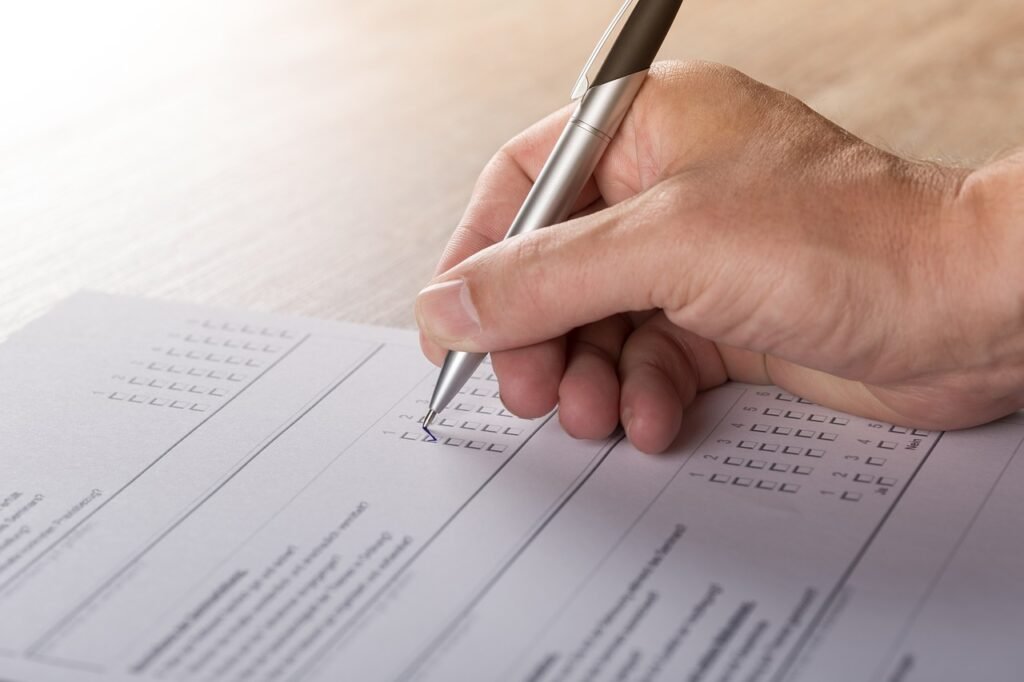In the intricate realm of digital marketing, the pursuit of leads stands as a perpetual challenge. The ability to discern promising leads and forecast their propensity to transform into paying customers is a transformative capability. This is precisely where the efficacy of lead scoring models comes into the spotlight. These models empower businesses to systematically evaluate, categorize, and assign values to leads based on a myriad of factors. These factors encompass everything from demographic information to behavioral patterns and interactions with your brand. Such scoring systems are indispensable in the strategic allocation of resources and ensuring that high-potential leads receive the attention they deserve. However, the optimization of lead scoring models for accurate conversion prediction is a nuanced and multifaceted endeavor. In this comprehensive guide, we will explore the intricacies of lead scoring, elucidate strategies for enhancing prediction accuracy, and delve into the tools and techniques that underpin successful conversion forecasting.
The Essence of Lead Scoring
Before we embark on the journey of optimizing lead scoring models, it is paramount to delve deeper into the fundamental principles of lead scoring. Let’s unravel the core concepts:
Lead Scoring in Focus:
- Lead scoring is a systematic and methodical process that entails the assignment of numerical values or scores to individual leads. These scores are rooted in an analysis of various lead attributes, behaviors, and interactions with your brand. They serve as a quantified representation of a lead’s potential to convert into a paying customer.
The Holy Grail: Conversion Prediction:
- At its core, the primary objective of lead scoring is to make precise predictions regarding which leads are most likely to transition into bona fide customers. This predictive prowess empowers businesses to tailor their sales and marketing efforts with laser-like precision.
Data as the Bedrock:
- Lead scoring is fundamentally a data-driven endeavor. It heavily relies on both demographic data (such as location, industry, and company size) and behavioral data (including website visits, email interactions, and content downloads). This data is meticulously scrutinized and interpreted to assign scores that reflect a lead’s likelihood to convert.
The Constant Evolution:
- The realm of lead scoring models is anything but static. A successful lead scoring system is not simply a one-time creation but a dynamic entity. Regular recalibration, refinement, and optimization are prerequisites to ensure that the scoring system remains in alignment with evolving customer behaviors and preferences.
The Art of Crafting and Optimizing Lead Scoring Models
Building an effective lead scoring model is akin to creating a finely tuned instrument. It requires meticulous planning, data analysis, and a deep understanding of your target audience. Let’s dive into the nuanced process of constructing and refining these models:
Selecting the Right Data Points:
- Building an accurate lead scoring model begins with selecting the right data points to consider. These data points can be divided into two categories: demographic and behavioral. Demographic data includes characteristics like company size, industry, and location, while behavioral data encompasses actions such as website visits, email opens, and content downloads. To optimize your model, it’s crucial to determine which data points are most indicative of conversion potential for your specific business.
Assigning Weight to Data Points:
- Not all data points are created equal. Some may have a more significant impact on predicting conversions than others. Assigning appropriate weight to each data point helps prioritize their importance in the scoring model. For example, a lead’s engagement with your product demo might carry more weight than their job title.
Establishing Scoring Ranges:
- Define scoring ranges that reflect the varying levels of lead quality. Leads with higher conversion potential should receive higher scores, while those with lower potential should be assigned lower scores. Establish clear thresholds that categorize leads as hot, warm, or cold based on their scores.
Continuous Monitoring and Adjustment:
- Lead scoring is not a “set it and forget it” process. It requires constant monitoring and adjustment. As new data becomes available and customer behaviors change, refine your scoring model to ensure it remains accurate.
Alignment with Sales Teams:
- Collaboration between marketing and sales teams is vital for lead scoring success. Ensure that your scoring model aligns with the sales team’s lead qualification criteria. Regular communication between the two departments helps fine-tune the model based on real-world feedback.
Tools and Technologies for Lead Scoring Optimization
The realm of lead scoring optimization benefits greatly from cutting-edge tools and technologies. These tools not only streamline the process but also enhance the accuracy and effectiveness of lead scoring models. Let’s explore some of the essential tools and technologies:
Customer Relationship Management (CRM) Systems:
- CRM systems like Salesforce, HubSpot, and Microsoft Dynamics offer robust lead scoring features. They allow for seamless integration of lead scoring models, ensuring that your sales and marketing teams are working with up-to-date lead scores.
Marketing Automation Platforms:
- Marketing automation platforms such as Marketo, Pardot, and Eloqua come equipped with lead scoring capabilities. They enable automated lead scoring based on predefined criteria and can trigger actions like lead nurturing emails or sales alerts.
Predictive Analytics Tools:
- Tools like RapidMiner, DataRobot, and IBM Watson provide advanced predictive analytics capabilities. They can uncover hidden patterns in your data and enhance the accuracy of your lead scoring predictions.
Machine Learning Libraries:
- Libraries like Scikit-learn (Python) and TensorFlow offer machine learning capabilities for building and fine-tuning lead scoring models. These libraries are ideal for organizations with in-house data science teams.
Measuring the Effectiveness of Your Lead Scoring Model
Understanding the impact of your lead scoring model on your business is essential for ongoing improvement. Here are strategies for measuring its effectiveness:
40. Conversion Rate Analysis:
- Calculate the conversion rate of leads who have been scored using your model compared to those who haven’t. This comparison helps gauge whether your scoring model positively influences conversion rates.
41. Sales Team Feedback:
- Solicit feedback from your sales team on the quality of leads generated through the scoring model. Their insights can reveal whether the model accurately identifies high-quality leads.
42. Lead Velocity Rate (LVR):
- LVR measures the rate at which your leads are moving through the sales funnel. Analyze how LVR changes after implementing or refining your lead scoring model.
43. Lead-to-Customer Conversion Time:
- Measure the time it takes for leads to convert into customers. A well-optimized scoring model should shorten this time by prioritizing high-conversion-potential leads.
44. Closed-Loop Reporting:
- Implement closed-loop reporting to track leads from initial contact through to closed deals. This end-to-end visibility helps assess the effectiveness of your lead scoring model at each stage.
45. Lead Scoring Accuracy:
- Calculate the accuracy of your lead scoring model by comparing its predictions to actual outcomes. This analysis reveals how well the model aligns with real-world results.

Related: Check out our free SEO suite

Significance of Lead Scoring in Marketing and Sales Alignment
The alignment between marketing and sales teams is pivotal for the success of any business. Lead scoring plays a central role in fostering this alignment by providing a common framework for evaluating and prioritizing leads. Let’s delve deeper into the various aspects of this alignment:
Shared Understanding of Lead Quality:
- Lead scoring establishes a shared understanding of what constitutes a high-quality lead. Marketing and sales teams align their efforts based on a lead’s score, ensuring that resources are focused on leads with the greatest potential.
Streamlined Lead Handoff:
- A well-structured lead scoring model streamlines the lead handoff process. Marketing passes leads to sales with clear scores and corresponding information, reducing friction and improving efficiency.
Improved Lead Response Time:
- Lead scoring enables swift lead response times. High-scoring leads are promptly contacted by sales teams, increasing the chances of conversion.
Tailored Lead Nurturing:
- Marketing can tailor lead nurturing campaigns based on lead scores. High-scoring leads receive targeted content and follow-ups, while lower-scoring leads may receive more generalized communications.
Data-Driven Decision Making:
- Both marketing and sales teams rely on data to make decisions. Lead scoring provides data-backed insights that guide strategy and resource allocation
Conclusion
In the ever-evolving landscape of digital marketing, the ability to predict which leads are most likely to convert into customers is paramount. Lead scoring emerges as the linchpin that empowers businesses to make data-driven decisions, allocate resources effectively, and align marketing and sales teams for maximum impact. Throughout this comprehensive guide, we’ve explored the intricate art of lead scoring, from its fundamental principles to advanced optimization strategies. We’ve delved into the tools and technologies that can supercharge your lead scoring efforts and discussed the importance of measuring its effectiveness.
Furthermore, we’ve highlighted how lead scoring bridges the gap between marketing and sales, fostering alignment, shared goals, and efficient lead management. This synergy ultimately leads to increased conversion rates and revenue growth. As you embark on your lead scoring journey, remember that it’s not a one-size-fits-all solution. Regular refinement and adaptation are essential to ensure that your scoring model remains accurate and aligned with your evolving business and customer landscape.
READ NEXT:





















